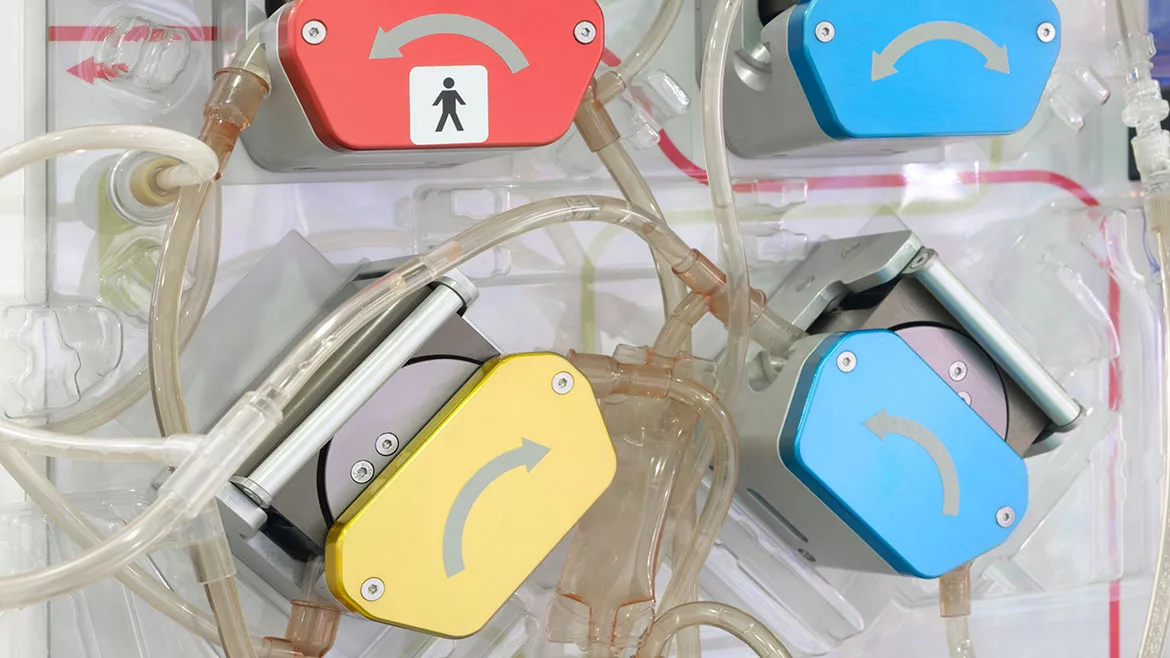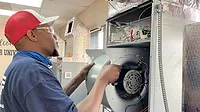Kidney Dialysis Facilities And Plumbing Systems

Backflow preventers are essential for protecting public health. But in the case of dialysis water, where they are placed could potentially be harmful to the patient.
Healthcare facilities are designed to protect at-risk patients for a variety of illnesses. This is true of the plumbing system design, especially in systems supplying water to medical equipment. At times there are conflicts between requirements of the plumbing code and standards for medical equipment. How these conflicts are resolved is a serious issue for facilities performing kidney dialysis.
Patients with end-stage renal disease have kidneys that are unable to effectively remove waste and toxins from their bloodstreams. As a result, these patients require either a kidney transplant or kidney dialysis to sustain life. Dialysis is the process of removing impurities from the blood. More than 350,000 people in the United States require dialysis, and this number is growing at 6 percent to 8 percent annually.
Water used in dialysis machines is required to meet very stringent chemical and microbiological standards to avoid patient injury. Normal drinking water will not suffice. ANSI/AAMI Standard RD62 establishes requirements for water treatment equipment for hemodialysis applications. (Figure 1 shows the components of a typical water treatment system used for dialysis applications.)
This ultra-pure water is then used to make “dialysate,” the fluid used to perform dialysis. During dialysis, the patient's blood is removed and transported through a thin hollow-tube membrane. Waste and toxins from the blood permeate the membrane, are transported into the dialysate, and the cleaner blood is then returned to the patient.
Unfortunately, it works two ways. Impurities in the dialysate can also permeate the membrane and enter the blood, which is why the dialysate must be ultra-pure.
Locating Devices
Backflow preventers are essential for protecting public health. But in the case of dialysis water, where they are placed in this location could potentially be harmful to the patient.
The Association for the Advancement of Medical Instrumentation is a national organization that develops standards and promotes safe, effective use of medical instrumentation and related technologies. The AAMI has encountered difficulties with interpretations of the Uniform Plumbing Code that require backflow prevention devices to be installed before each dialysis machine.
One problem is that an ultra-pure water system must be designed and maintained to prevent bacterial contamination. System components need to have smooth and simple flow paths to prevent biofilm buildup and to promote disinfection.
The typical backflow preventer used in plumbing systems, however, is not designed for this use. Backflow preventers have complicated flow paths that are not easily cleaned if bacteria contamination is introduced. In addition, if germicides or other cleaning agents are used, it may be difficult to flush out any residues during the cleaning cycle. Both these problems put the patient at risk.
Another problem is that ultra-pure water is also extremely corrosive. Most backflow prevention devices are produced from brass. AAMI contends that brass is not a suitable material for dialysis equipment due to the potential for leaching copper and zinc. Food and Drug Administration reports have shown that copper and zinc in the dialysis water have been known to cause hemolytic anemia in dialysis patients.
Overall, the major goals that everyone agrees on are protecting the potable water supply from contamination, protecting each dialysis machine from cross-contamination from other dialysis machines, and protecting patient health by preventing contamination of the dialysis water.
The potable water supply is protected from contamination by a reduced pressure backflow prevention device at the inlet of the ultra-pure water treatment system. This completely isolates that ultra-pure water system from the rest of the potable water system.
Medical Devices
AAMI believes this is where the jurisdiction of the plumbing code should end, and the ultra-pure water system should be considered part of a medical device regulated by Food and Drug Administration and AAMI standards.
Dialysis machines are set up in parallel feeding off of the ultra-pure water system. Each individual machine needs to be protected from contaminating its sister machine, and as such, is equipped with an air gap to keep any possible contamination isolated from the other machines.
Contamination of dialysis water is prevented by selection of materials compatible with the ultra-pure water system. Cross-linked polyethylene (PEX) tubing is among the materials preferred by designers for ultra-pure water systems. PEX has the desired smooth inner surface and can also withstand the high temperatures required for some systems that use a hot water pasteurization process for disinfection. PEX, however, has not been accepted in all plumbing jurisdictions.
In May 2005, AAMI proposed a Temporary Interim Amendment (TIA) to the Uniform Plumbing Code with the International Association of Plumbing and Mechanical Officials. A TIA is an emergency code change that can be effective immediately instead of the normal two-year cycle for code changes.
AAMI's proposed TIA required materials compatible with the disinfectants used and which comply with FDA CFR 21 Section 510 (k), which would include PEX. The proposed TIA established a dialysis water system including all plumbing components as a separate medical device. It clearly stated that backflow prevention devices are not needed at the inlet of each dialysis machine, but did establish the requirement for backflow prevention at the inlet to the dialysis water system.
Although the proposed TIA was modified during the May 2005 Uniform Plumbing Code Technical Committee, AAMI is continuing to work with IAPMO to resolve this conflict in the best interest of public health.
Looking for a reprint of this article?
From high-res PDFs to custom plaques, order your copy today!




